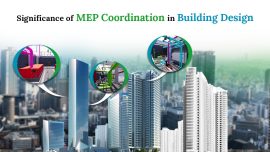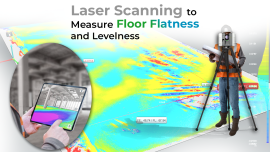
BIM facility operations – Building Information Model is the storehouse of information about numerous services and project participants starting from the design build stage to the operation phase. The information in the BIM model keeps on updating as per the changes made by the stakeholders. As a result of which, it is essential to know how the information flows in the building information model and is exchanged in BIM.
Let’s now have a look at how the information flows in BIM throughout the project facility operations:
The flow of Information during the design-build phase: Usually, the design build process is divided into architectural, structural, and facility engineering. The facility operations encompass designs of electrical, water supply, drainage, HVAC, and thermal power.
- Architectural Design encompasses graphic design, shape, façade, etc.
- The structural design delivers the structural scheme of architectural building design to get a unified construction structure.
- The electrical design provides solutions for the construction electrical equipment and lighting power, along with the design of lightning protection grounding and weak current provision.
- Water supply and drainage design include the water supply system of building, internal drainage, and rainwater drainage system.
- HVAC embraces heating system design, and air conditioning together with ventilation and smoke control system.
- Thermal power design for the residential building consists of gas system design, pipe network layout, and hydraulic calculation of the gas pipe network.
Building design gets constantly enriched through coordinating amongst architectural, structural, electrical, plumbing, and mechanical professionals.
The flow of Information during the construction phase
- The architectural along with structural engineering stage gets divided into four segments, including foundation, structure, waterproof, and building decoration engineering. Foundation engineering for architectural and structural services encompass the relative elevation of 0.000 mm underneath the building foundation, waterproofing, and protection of foundation pit engineering. Constructability analysis through Building Information Modeling facilitates in drawing an information flow model for the structural foundation.
The flow of Information during the operational phase
- The operational phase of a building facility includes reception, usage, maintenance, and demolition. During this phase, the asset management right gets transferred from a construction company to a property management firm. The primary task of the operation phase includes property reception. As per property management regulations, a firm arranges reception work. All information pertaining to the work is obtained from the BIM model at the construction stage. This encompasses project approval documentation, contracts, agreements, facilities operations, as well as property management information. Asset usage constitutes to be another most important task during the operational phase for managing the property in a normal way. Property demolition is the last stage that complies with the laws of the building regulations.
Integrating facility lifecycle information
- After analyzing the flow of information in various stages, information exchange takes place amongst various project stakeholders. This embraces volume, varied sources, storage, and dynamic process of information. The information system in construction gets designed for a specific phase. Building Information Modeling caters facility operations and maintenance, by integrating information from varied stages to facilitate communication and reuse. Further, it is the primary element of understanding lifecycle management in construction. So, the different portions of the BIM include Design BIM, Construction BIM, and Operation BIM, though the information within the BIM model is not isolated.
So, Building Information Modeling integrates the entire workflow, starting from the design build stage, to construction and operation. BIM integrates facility operations, establishes an engineering information set, and describing the whole building life-cycle. It is intelligent BIM modeling that realizes the integration and data by extracting and integrating various sub-models. To take instance, while conducting the building designs of architecture, structure, electric, water supply, HVAC, and thermal power as per design stage information, several geometrical data get produced along with the existing requirement for collaborative data access. It’s the construction phase that can extract information from the design-build stage and apply it to BIM software applications. Likewise, the operation phase could also extract part of the information from the design-build phase and construction stage, and apply that to operational software. Owing to the information preservation and BIM integration, the problems of information loss and errors get resolved. To seek BIM implementation, talk to the BIM consultants of Tejjy Inc. BIM service provider in the USA at 202-6465-4830 or info@tejjy.com.










